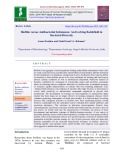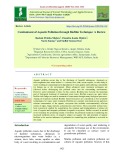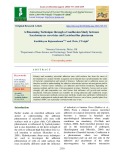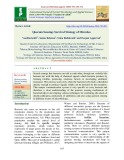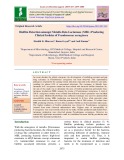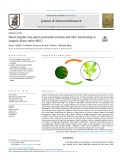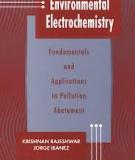
Biofilm technique
-
Biofilm is an aggregate of microorganisms forming multicellular communities where cells are stuck cooperatively by a produced by oneself Matrix Extracellularis. Biofilm formation by microorganisms is a ubiquitous, omnipresent & active mechanism. This vigorous ability of microbes to form biofilms proves to be a key technique for resisting and surviving in adverse climatic conditions as well as antibacterial compounds. Numerous features of biofilms contributed by component of extracellular matrix and microbial community allows in tolerating adverse conditions.
 16p
16p  trinhthamhodang11
trinhthamhodang11
 27-04-2021
27-04-2021
 9
9
 1
1
 Download
Download
-
Aquatic pollution occurs due to the discharge of harmful substances, chemicals or microorganisms into water bodies i.e. a stream, river, lake, ocean, aquifer, or other body of water resulting in contamination & degradation of water quality and rendering it unsuitable for human use or the environment. Many advanced water treatment techniques are followed before discharging this polluted water into the surrounding environment. However some limitations is there. In this context, Biofilms have become the important part of biological treatment of municipal waste water.
 13p
13p  angicungduoc6
angicungduoc6
 22-07-2020
22-07-2020
 17
17
 1
1
 Download
Download
-
Primary and secondary microbial adhesion onto solid surfaces has been the onset of development of a mature biofilm in aqueous environments that is predominantly the mode of bacterial contamination and spread of diseases. Adhesion and co-adhesion assays are therefore useful in understanding the adhesive interactions between microorganism and its surfaces. Various factors influence cell adhesion and biofilm formation, depending on aqueous medium and the type of microorganism in place.
 10p
10p  trinhthamhodang5
trinhthamhodang5
 16-05-2020
16-05-2020
 12
12
 1
1
 Download
Download
-
Sounds strange that bacteria can talk to each other, though not verbally like humans but with the help of chemical signals which bacteria produce by forming biofilm, producing virulence factors or developing antibiotic resistance. The process starts only when the bacterial cell reach a threshold density enough to produce signals which can be detected by the receptors.
 8p
8p  angicungduoc4
angicungduoc4
 26-04-2020
26-04-2020
 14
14
 1
1
 Download
Download
-
In recent decades the global emergence the development of multidrug-resistant and pan drug resistance in Pseudomonas aeruginosa has been observed. This opportunistic pathogen is responsible for causing various infections especially in the intensive care units, resulting for almost 10% of nosocomial infections. The resistance to Metallo betalactamase in P. aeruginosa strains has been related with bacterial biofilm formation. So, the aim of this study was to determine the rates of biofilm production and metallo betalactamase production (MBL) among the strains of Pseudomonas aeruginosa.
 6p
6p  trinhthamhodang3
trinhthamhodang3
 22-02-2020
22-02-2020
 8
8
 0
0
 Download
Download
-
A plant’s microbiota has various implications for the plant’s health and performance; however, the roles of many microbial lineages, particularly Archaea, have not been explored in detail. In the present study, analysis of archaea-specific 16S rRNA gene fragments and shotgun-sequenced metagenomes was combined with visualization techniques to obtain the first insights into the archaeome of a common salad plant, arugula (Eruca sativa Mill.).
 10p
10p  caygaocaolon1
caygaocaolon1
 13-11-2019
13-11-2019
 10
10
 0
0
 Download
Download
-
Electrochemistry has been used extensively in the past three decades to determine the chemical composition of environmental samples from the water column, sediments, soils, biofilms, and microbial mats.
 406p
406p  xunu1311
xunu1311
 03-11-2012
03-11-2012
 79
79
 2
2
 Download
Download
-
Electrochemistry has been used extensively in the past three decades to determine the chemical composition of environmental samples from the water column, sediments, soils, biofilms, and microbial mats.
 0p
0p  taurus23
taurus23
 26-09-2012
26-09-2012
 76
76
 15
15
 Download
Download
-
Thus, despite the value of these clinical methods, such techniques often result in inconsistent diagnoses, as well as an inability to reliably predict a patient´s response to treatment (Offenbacher et al. 2007). A reason for the limited success in predicting the future course of disease in some individuals is that the clinical phenotype does not reflect the underlying biologic processes that occur at the biofilm-gingival interface (Offenbacher et al. 2007).
 745p
745p  phuocnh123
phuocnh123
 26-03-2012
26-03-2012
 183
183
 80
80
 Download
Download
CHỦ ĐỀ BẠN MUỐN TÌM









